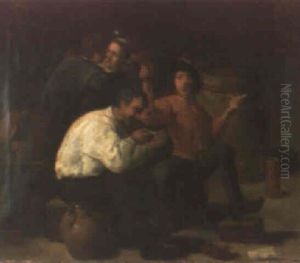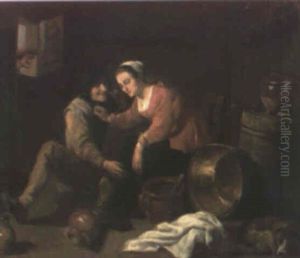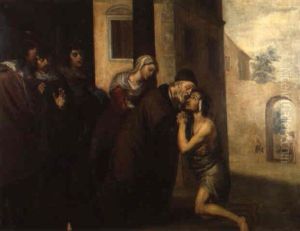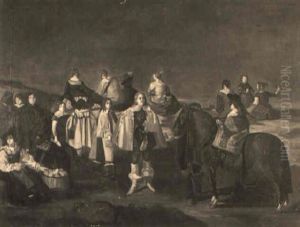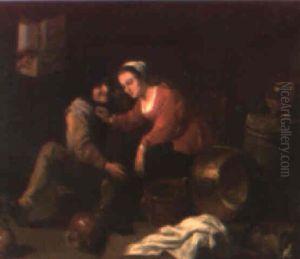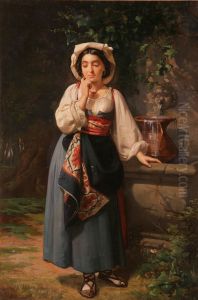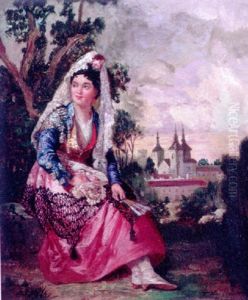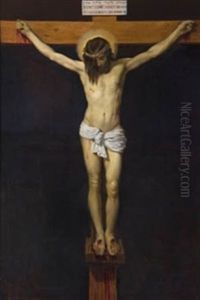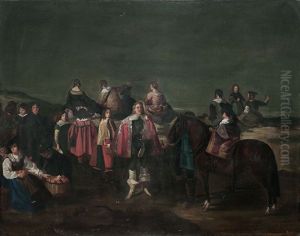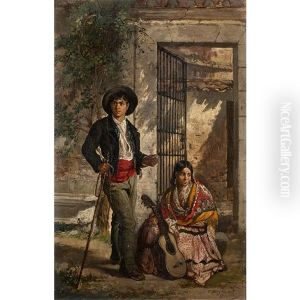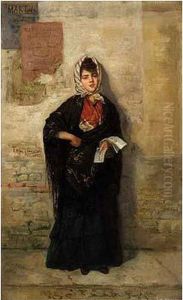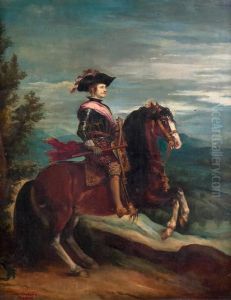Francisco Diaz Carreno Paintings
Francisco Diaz Carreno was a notable Mexican painter and muralist, born in the year 1916. His artistic journey began in a period rich with cultural and political movements, which deeply influenced his work and thematic choices throughout his career. Diaz Carreno was part of a vibrant artistic tradition in Mexico, a country famous for its muralists like Diego Rivera, David Alfaro Siqueiros, and Jose Clemente Orozco, who used their art to engage with and comment on societal issues. While he may not be as widely recognized internationally as his aforementioned contemporaries, Diaz Carreno's contributions to Mexican art and culture were significant.
Diaz Carreno's body of work was diverse, encompassing murals, paintings, and drawings. His art often reflected social and political themes, with a particular focus on the struggles and aspirations of the Mexican people. His style evolved over the years, but he consistently used vivid colors and dynamic compositions, characteristics that have long been associated with Mexican muralism. He drew inspiration from Mexico's history, its people, and the landscapes, integrating elements of Mexican heritage and folklore into his work.
Throughout his career, Diaz Carreno also engaged in teaching, passing on his skills and knowledge to younger generations of artists. This dual role of artist and educator helped to cement his legacy within Mexico's artistic community. He was actively involved in the cultural life of Mexico, participating in numerous exhibitions and contributing to the artistic discourse of the country.
Diaz Carreno lived through significant historical events, including the Mexican Revolution's aftermath, which had a profound impact on the nation's identity and cultural expression. This context influenced his approach to art as a means for social commentary and change. He remained committed to exploring themes of justice, equality, and human dignity throughout his life.
Francisco Diaz Carreno passed away in 1998, leaving behind a rich oeuvre that continues to be studied and appreciated for its depth, beauty, and social relevance. His work remains an important part of Mexico's artistic heritage, reflecting the spirit of a nation in transition and the enduring power of art as a vehicle for societal reflection and commentary.

